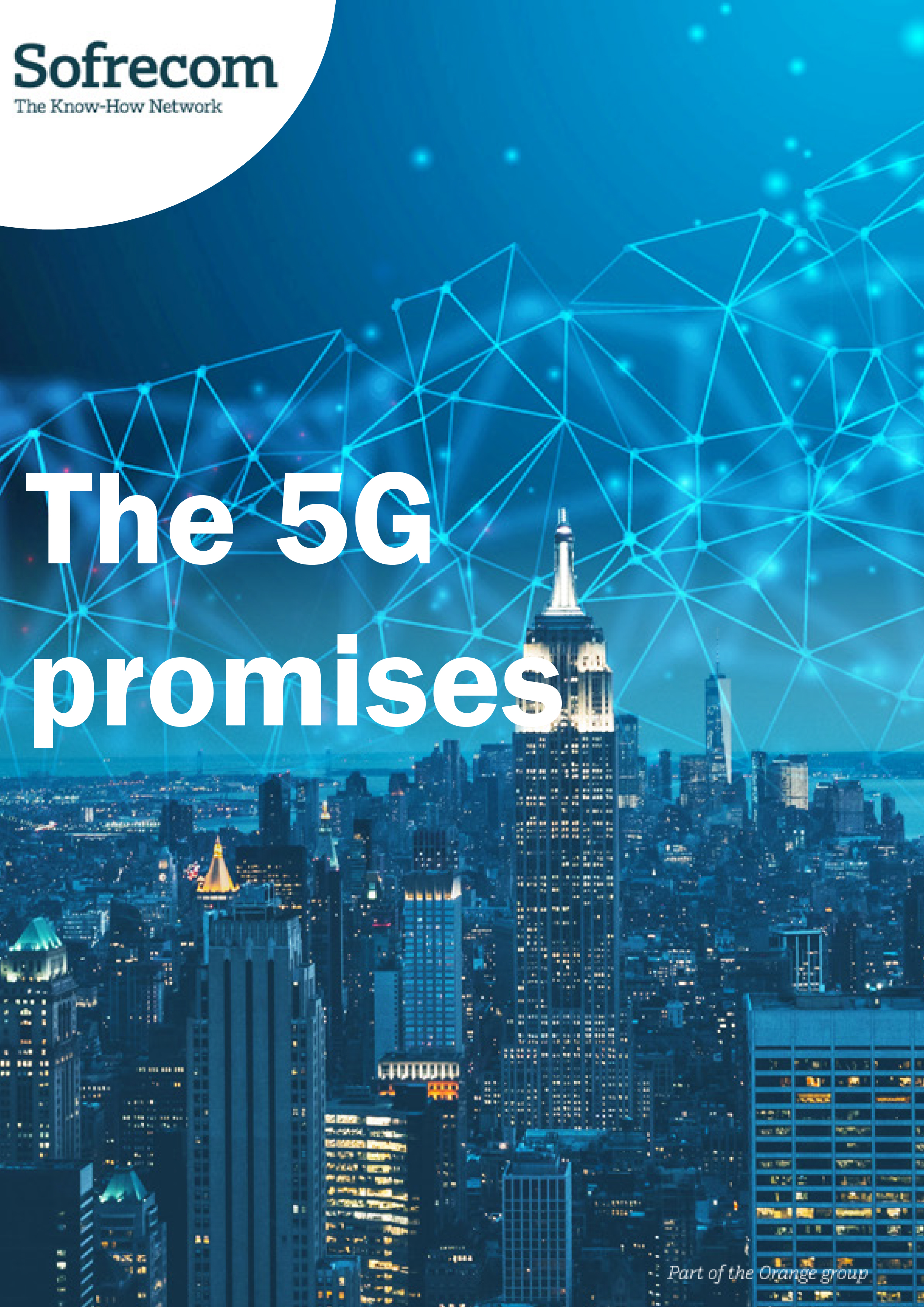
The COVID 19 outbreak has put a halt to 5G testing and deployment in many countries. The ecosystem necessary for its development, from the production of 5G smartphones and network equipment to licensing, is currently on hold. The effects of the crisis on the global economy could also affect the investment capacity of both operators and end customers.
Nicolas Jaupitre

5G, the first commercial releases of which have just been announced, promises speed and service quality capable of matching what only fiber optics was able to offer up to the present. The foreseeable performance levels are such that operators wonder whether it even makes sense to invest in costly and complex fiber deployments, when 5G is just around the corner.
Is it realistic to choose 5G over fiber, though? To determine the best strategy, players will need to carefully compare the availability, speed, service quality, technical implementation figures and monetization opportunities they see in 5G.
« Tomorrow » is not before 2021 or 2022 at best
5G NSA (non-standalone) deployments are already carried out in numerous countries. But it is important to bear in mind that the most drastic changes will only come up with the SA (standalone) version of 5G whose normalization by 3GPP continues. A report of the ENEA manufacturer published in March 2020 indicates that fewer than 50% of operators planned on launching standalone 5G within 2 years. Nothing at this stage specifies the extent of the 5G coverage delivered after these launches.
And these estimations were made before the crisis.
The COVID-19 epidemic has put an end to 5G tests and rollouts in numerous countries. The ecosystem necessary to its development, whether it be the production of 5G smartphones, or network equipment, or also licensing process, is currently paused. The effects of the crisis on the global economy could also affect the operators’ investment capacities as much as the final customers’.
Very high speeds... in theory
Fiber optics can theoretically offer speeds reaching several Gbps (Gigabits per second): flow rates announced for the market today vary for the most part between 100 Mbps and 1 Gbps in download and 50 Mbps and 250 Mbps in upload. Contrary to copper wire and xDSL technologies, which are victim to significant attenuation after a few kilometers, fiber optic signals show virtually no decline with distance, thus enabling operators to guarantee a minimum throughput.
5G is the promise of speeds higher than the Gigabit, of reduced latency and of a high availability. Recent tests give an idea of how reality might look: Qualcomm was able to reach a median download rate of 1.4 Gbps for browsing, while Verizon and Ericsson tested downloading 4K video in a moving car and achieved speeds in excess of 6 Gbps.
It is thus safe to assume that 5G will largely exceed the capabilities currently offered by Fiber Optics. It still needs to be kept in mind, however, that the 5G bit rate, like that offered by any radio technology, will largely depend on criteria requiring optimization and regular adaptation of the network, such as the number of users on the cell at a given point in time, and the quality of the signal. And while it is possible to guarantee minimum throughputs in FTTH, it will probably be hard to do the same on 5G. Consequently, business customers for whom throughput is critical, and who do not absolutely need mobility, will always prefer the reliability of fiber.
The existing network mesh will probably not suffice for 5G
Deploying optical fiber will necessarily entail major, lengthy and costly civil engineering work. That criterion alone could make 5G preferable to fiber.
However, operators do not yet know which frequencies they will be granted. With high frequencies, known to be low in range, the density of the 5G network will need to be significantly ramped up, if operators are to reach the promised throughput levels. As to building new antennas or deploying high points, these are major works projects that require approvals increasingly difficult to obtain from municipalities concerned about the impact of mobile waves on health. Paris, for instance, adopted in 2017 a charter aimed at reducing the maximum permitted field strength levels for base stations by 30%.
The impact on costs and timeframes is such that we cannot currently confirm that the business case will necessarily be in favor of 5G.
5G is nonetheless an economically attractive alternative and one more easily activated in areas where fiber is not deployed: in the suburban areas of certain countries or for the temporary needs of companies, on construction sites for example.
Monetization, another key aspect
As with any major network deployment and investment, the question of monetization arises: 5G is all fine and dandy, but what’s to gain? And who will benefit?
Since the end of 2019 the GSMA had identified more than 100 5G compatible terminals and the rate is speeding up in 2020. Nevertheless, as the majority of current terminals today are not compatible, the marketing of 5G packages will necessarily entail massive terminal replacement. Will they be offered at a price affordable enough to win over the largest possible number of customers, or will operators have to subsidize them?
As to actual uses, will the ability to download a movie in just a few seconds or play games on-line with almost no lag be sufficient advantages for users possibly already equipped with 4G packages that satisfy their current needs? There is every reason to doubt they will be willing to pay more for an improvement in user experience that is barely perceptible.
In the B2B sector, the IOT and self-driving cars – the two flagship promises of 5G – leap to mind. However, the value which operators can hope to derive solely from connectivity is low. Beyond those use cases, there are known applications for which throughout and low network latency are key features: video-conferencing, for one – but is it so frequently used while on mobility? Another example can be found in the virtual reality applications that shorten the servicing time needed by technicians on the ground, or services that allow photos or maps to be shared and modified by contributors, remotely and in real time. Will these services alone be enough to generate the business volumes needed for the investments made to be profitable and create value for the operator?
5G can deliver on all its promises, but only in combination with fiber optics
Even if 5G is ultimately chosen as the technology for accessing very high speed, the antennas will have to be gradually connected with fiber optics to support that speed and low latency up to the core network and thus guarantee the promised quality of service. The choice between 5G and optical fiber therefore only comes up with respect to the “last mile”.
In conclusion, it is not a matter of challenging the benefits of 5G: this new technology will allow new uses that require very high data rates, low latencies and differentiated service qualities. However, it would be incorrect to assume that 5G will be able to meet all uses and replace optical fiber as an access technology everywhere. A sound network strategy will therefore have to take into account the advantages and disadvantages of these technologies, the actual needs of each population involved and the market potential of the different geographical areas across a country, to combine them intelligently and build the best possible “consumer needs match/profitability” ratio.





